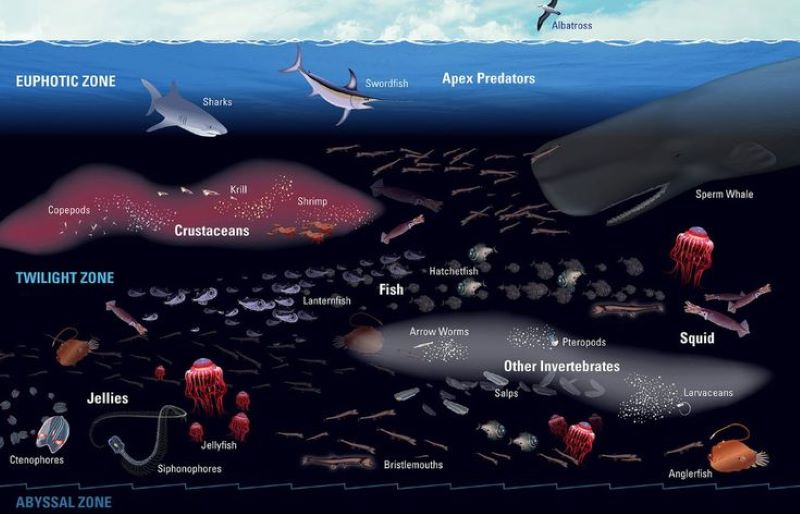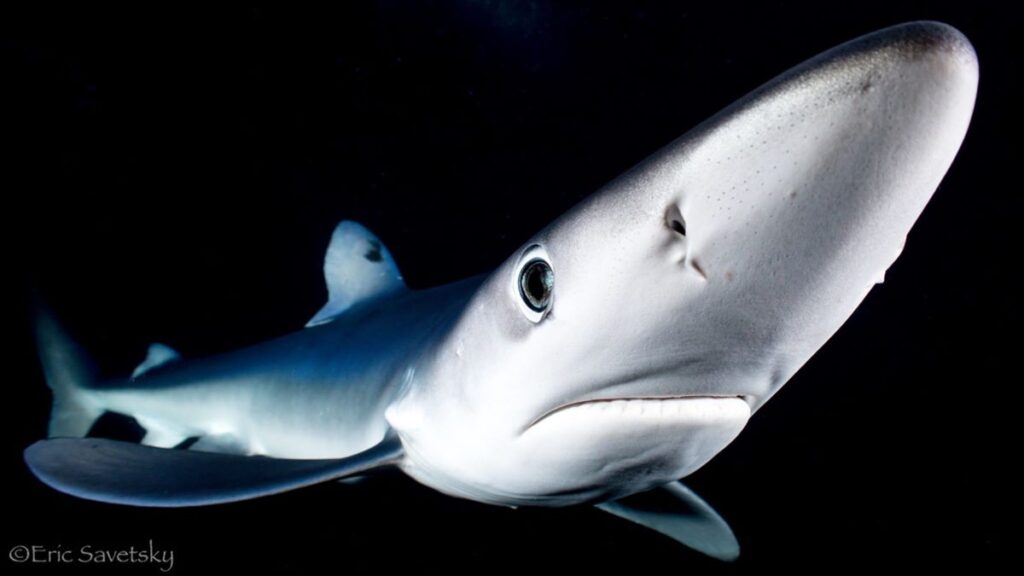The mesopelagic zone of the ocean, also known as the twilight zone, plays a key role in the marine ecosystem. This vital part of the ocean, which lies 200 to 1,000 meters below the surface, is critical habitat for many large marine fish and predators.
As a result of research conducted by specialists from the Woods Hole Oceanographic Institute, it was revealed that large predators, such as sharks and tunas, reside at great ocean depths, much more often than previously thought. This area, also known as the ocean twilight zone, has not previously been considered critical habitat for large predator species.

As it turns out, the mesopelagic zone of the ocean is crucial for many large marine fish that are thought to only inhabit the surface. Scientists have found that large predators dive deep in the twilight zone and often follow a dense layer of organisms called the deep scattering layer.
ll the animals we think of as inhabitants of the ocean’s surface use the ocean’s depths to a much greater extent than previously thought.” – Camrin D. Braun, co-author of the study
The diving patterns of these fish recorded by the tags were compared to sonar data, which showed daily movements in the deep scattering layer (DSL) – a zone where huge numbers of small fish and marine organisms are packed so densely that when scientists first used sonar, they confused this layer with the ocean floor.

During the day, animals in the DSL inhabit the mesopelagic zone, but when the sun sets, many of these individuals – such as fish, molluscs, and crustaceans – swim to surface waters to feed. When the sun reappears above the horizon, scattering the light on the surface, they descend back into the twilight zone, where they will remain until night falls. This daily rhythm is called Diel vertical migration, and it is a pattern that scientists have been studying for decades.
Analysis of years of data helps shed light on DSL-tuned predators. Neverthless, some of them probably come down not only to hunt smaller prey and animals. Their behavior often deviates from everyday vertical migration patterns, leading to further questions about why they dive so deep if not to feed.
“Sharks and tuna are evolutionarily very far apart and have very different sensory systems. Yet both groups believe that this type of behavior is worth practicing. With so many fish and organisms making this migration, these species potentially transfer huge amounts of carbon dioxide from the surface to the ocean depths, where it will remain for centuries – potentially a vital element in the mesopelagic ecosystem.”
Simon Thorrold, co-author of the study
The mesopelagic zone provides many benefits to both humans and animals. It is also critical habitat for many large marine fish species, and clearly it is in all of our interests to keep it intact, and that means a lot of further research into the deep-sea food web.
The research used data from on-board sonar, Earth-observing satellites, ocean models assimilating data and information collected from 344 electronic tags of 12 species living in the North Atlantic, including the great white shark, tiger shark, whale shark, yellowfin tuna, swordfish and others that traveled almost 1.5 million km of pelagic ocean.
WHOI
